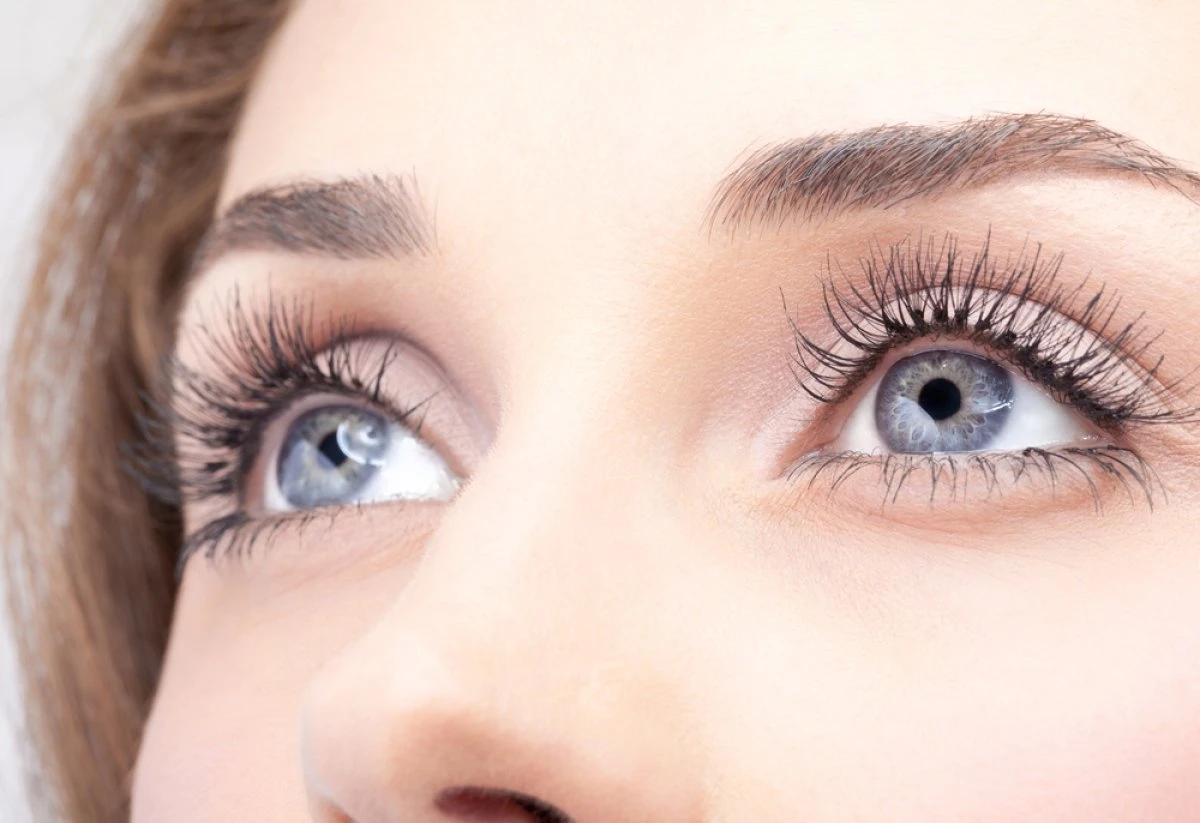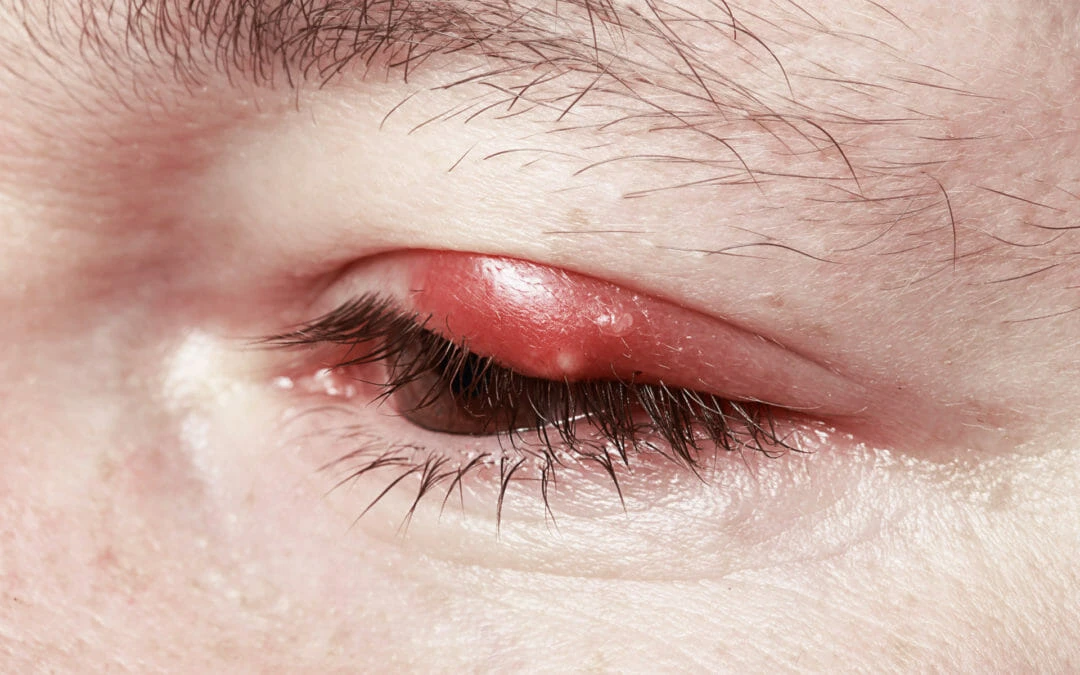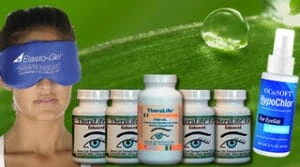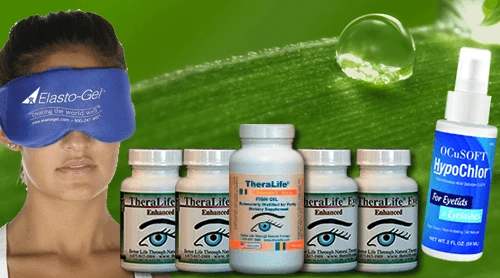Understanding Chalazion and MGD
Before delving into treatment options, it is essential to comprehend that a chalazion is a chronic, non-infectious eyelid lump, while Meibomian Gland Dysfunction (MGD) pertains to the abnormal function of meibomian glands, often contributing to dry eye symptoms. Chalazion formation typically results from the obstruction of the oil-secreting meibomian glands located in the eyelids. This blockage leads to the retention of glandular secretions and subsequent formation of a localized granulomatous inflammation.
MGD diagnosis is critical as it is frequently associated with chalazion development. MGD is characterized by either qualitative or quantitative changes in the glandular secretions, which can lead to eyelid margin inflammation, ocular surface disease, and discomfort. Identifying MGD early can prevent or reduce the risk of chalazion formation.
To diagnose MGD, clinicians conduct a thorough examination of the eyelid margin, meibomian gland orifices, and the quality of secretions. Diagnostic tests may include meibography, which provides imaging of the meibomian glands, and tear film assessments to evaluate tear stability and composition.
Clinically, it is paramount to approach the patient with a personalized treatment plan, considering the severity and impact of the symptoms on the individual’s daily activities and quality of life.
Add To Cart
Warm Compresses Effectiveness
A patient’s treatment regimen for chalazion and MGD often includes the application of warm compresses to alleviate blockage and promote glandular secretion. Heat application is a cornerstone in managing these conditions, as it plays a critical role in softening the lipid secretions, thereby aiding in the restoration of normal gland function. To ensure the effectiveness of this treatment, it is essential to understand the various compress types and their proper use.
- Consistent Heat: Maintains a therapeutic temperature, which is crucial for the compress to be effective.
- Duration: Recommended application time typically ranges from 5 to 10 minutes, repeated multiple times daily.
- Compress Types: Include reusable gel packs, microwavable pads, or warm, moist washcloths, each with its own benefits.
- Hygiene: Ensures the avoidance of potential contaminants that could exacerbate the condition.
- Compliance: Encourages patient adherence to the treatment plan, emphasizing the importance of regular use for optimal outcomes.
In clinical practice, the selection of compress type should be individualized based on the patient’s needs, convenience, and tolerance, promoting adherence to the regimen. By integrating warm compresses into a patient-centered approach, clinicians can enhance the efficacy of treatment for chalazion and MGD, ultimately improving patient outcomes.
Prescription Medications Benefits
Transitioning from the application of warm compresses, prescription medications offer targeted therapeutic benefits to address underlying inflammation and infection in the treatment of chalazion and meibomian gland dysfunction (MGD). Prescription antibiotics, for instance, are judiciously used to combat bacterial colonization that may exacerbate MGD or secondary infections in chalazia. The careful selection and use of these agents are paramount to mitigate the risk of antibiotic resistance, ensuring that therapeutic regimens remain effective and sustainable in the long term.
In cases where inflammation is pronounced, corticosteroids may be prescribed. These potent anti-inflammatory agents can significantly reduce swelling and discomfort, facilitating a more rapid resolution of chalazia. However, it is essential to acknowledge corticosteroid risks, including potential elevation of intraocular pressure and cataract formation when used inappropriately. Therefore, their use must be closely monitored by healthcare professionals.
Patient-centered care also involves educating individuals about potential side effects and ensuring adherence to prescribed regimens to optimize outcomes. The benefits of prescription medications in treating MGD and chalazion are substantial when used judiciously, in conjunction with other treatment modalities.
Effective treatment, however, goes beyond medications. The next section will delve into the importance of lid hygiene in managing and preventing MGD and chalazion, a cornerstone of therapy that complements pharmacological interventions.
Lid Hygiene Importance
Maintaining rigorous lid hygiene is integral to complementing pharmacological interventions, effectively managing meibomian gland dysfunction (MGD), and preventing the recurrence of chalazion. For patients, particularly those susceptible to ocular surface disorders, the significance of clean eyelids cannot be overstated. A systematic approach to lid hygiene can bring symptomatic relief and can serve as a cornerstone of long-term eye care.
Incorporating lid hygiene into daily routines is essential for patient health, and should include:
- Warm Compresses: Applying warmth helps liquefy meibum, facilitating its release and reducing gland blockages.
- Lid Scrubs: Using prescribed solutions to gently cleanse the lid margins can prevent bacterial colonization and biofilm formation.
- Eye Makeup Risks: Minimizing the use of eye makeup, especially waterproof products, and ensuring thorough removal to avoid build-up and irritation.
- Contact Lens Hygiene: Practicing diligent care in handling and cleaning contact lenses to avert contamination and associated lid inflammation.
- Nutritional Considerations: Encouraging the intake of omega-3 fatty acids to support healthy meibomian gland function.
Patients should be counseled on the importance of these practices, with emphasis on consistency to maintain ocular surface integrity.
In-Office Procedures Explained
In-office procedures for uveitis management are supported by scientific studies that demonstrate their therapeutic benefits. These treatments, which are backed by clinical evidence, are designed to optimize patient outcomes while ensuring minimal interference with daily activities. Educating patients about the scientific basis of these interventions and having realistic discussions about recovery timeframes are essential for informed consent and adherence to treatment plans.
- Intravitreal injections of corticosteroids have been shown to effectively reduce uveitis inflammation and improve visual acuity with a favorable safety profile (ScienceDirect, 2013).
- A study published in MDPI (2015) highlighted the use of immunosuppressive agents in uveitis, emphasizing their role in minimizing inflammation and preventing relapses, thereby preserving vision.
- According to a Google Books source, case studies on the treatment of uveitis have underscored the importance of early diagnosis and intervention to prevent complications and improve long-term visual outcomes.
- The National Center for Biotechnology Information (NCBI) provided insights into the use of biological agents in refractory uveitis, showcasing their potential to control inflammation when conventional therapies fail (2013).
- Research accessible via AIR Unimi emphasized the role of tumor necrosis factor (TNF) inhibitors in managing uveitis, particularly in cases linked to systemic diseases, with case studies illustrating significant clinical improvement (2019).
- Clinical studies have demonstrated the efficacy of periocular corticosteroid injections in reducing inflammation and preserving vision in patients with uveitis, as reported in ScienceDirect (2009).
- According to a Springer article, the use of interferon therapy has shown promise in treating uveitis, particularly for those who do not respond to standard treatments, by reducing ocular inflammation and improving visual outcomes (2006).
- A ScienceDirect article from 2016 discussed the long-term effectiveness of adalimumab, a biologic agent, in treating non-infectious uveitis, highlighting its ability to reduce flare-ups and the need for corticosteroids.
- Biologics, as reviewed in a 2007 issue of Current Opinion in Ophthalmology, are increasingly recognized for their role in the treatment of uveitis, providing new hope for patients with severe and refractory cases.
- An NCBI article from 2013 focused on the use of sirolimus as an innovative immunomodulatory therapy, reporting its utility in managing non-infectious posterior uveitis by targeting the underlying disease mechanisms.
Procedure Effectiveness
In-office procedures for chalazion and meibomian gland dysfunction (MGD) stand out due to their high success rates and targeted therapeutic effects. When conservative management, such as natural remedies, fails to yield adequate results, more definitive options are considered.
Surgical removal of a chalazion, for instance, offers immediate relief and a definitive solution, especially in cases where the lesion is causing significant discomfort or visual impairment. Incision and Curettage effectively removes the chalazion, with minimal recurrence.
For MGD, there are several procedures available. Meibomian Gland Expression offers symptomatic relief by clearing gland blockages. LipiFlow Thermal Pulsation applies heat and pressure to alleviate gland dysfunction. Intense Pulsed Light (IPL) Therapy targets inflammation and promotes normal gland function. Antibiotic/steroid injections reduce inflammation and bacterial overgrowth within the glands.
Each procedure is supported by clinical evidence, emphasizing patient safety and outcome optimization.
Recovery Time Expectations
Most patients experience a swift recovery period following in-office chalazion and MGD treatments, typically resuming normal activities within a few days. The precise duration of recovery may vary depending on the individual patient’s response to treatment and adherence to post-procedural care. To ensure optimal healing and minimize surgical risks, clinicians often recommend implementing certain home remedies alongside medical advice.
| Treatment Type | Expected Recovery Time |
|---|---|
| Chalazion Surgery | 1-2 weeks |
| MGD Therapy | Varies; days to weeks |
Following surgery for a chalazion, minor swelling or bruising may occur, but these symptoms are usually transient. For MGD, therapeutic interventions such as warm compresses and eyelid massages may expedite recovery, complementing in-office procedures. It is essential for patients to follow their healthcare provider’s instructions closely to facilitate a smooth and effective recovery.
Alternative Therapies Insights
Alternative therapies for chalazion and meibomian gland dysfunction (MGD) are gaining attention due to their non-invasive nature and potential to complement conventional treatments. Patients seeking a holistic approach often explore options such as homeopathic remedies, which are tailored to the individual’s unique symptom profile and constitution. Although scientific evidence supporting homeopathy in the treatment of chalazion and MGD is limited, anecdotal reports suggest some individuals may experience relief.
The effectiveness of acupuncture, a cornerstone of traditional Chinese medicine, is also being examined. Acupuncture aims to restore balance within the body’s energy channels and can potentially reduce inflammation and promote healing in ocular conditions.
In the context of chalazion and MGD management, consider the following alternative therapies:
- Warm compresses to soften the contents of the meibomian glands, facilitating natural drainage.
- Lid hygiene with mild baby shampoo or commercial lid scrubs to reduce lid margin bacteria and biofilm.
- Omega-3 fatty acid supplements to modulate inflammation and improve meibomian gland function.
- Massage techniques to promote glandular expression and drainage.
- Antioxidant-rich green tea compresses, which may possess anti-inflammatory properties beneficial for MGD sufferers.
Incorporation of these therapies should be individualized and discussed with a healthcare professional to ensure safety and appropriateness for each patient’s condition.
Frequently Asked Questions
How Does Diet and Nutrition Impact the Management and Prevention of Chalazion and Mgd?
Scientific research has demonstrated the effectiveness of various uveitis treatments, which can be informative for the management of ocular conditions such as Meibomian Gland Dysfunction (MGD) and chalazions. While dietary considerations are important for these conditions, advancements in uveitis treatments offer insights into evidence-based approaches for ocular healthcare.
Can Stress or Lifestyle Factors Contribute to the Occurrence of Chalazion and Mgd?
While stress and lifestyle choices may influence conditions like Meibomian Gland Dysfunction (MGD) and chalazion,
Patients with ocular conditions, including MGD, chalazion, or uveitis, may benefit from a holistic management approach that addresses not only medical treatment but also lifestyle factors such as stress and sleep patterns, thereby supporting overall ocular health and potentially reducing the incidence or severity of these conditions.
Are There Any Specific Makeup or Skincare Products That Should Be Avoided to Prevent Chalazion and Mgd?
To minimize the risk of chalazion and meibomian gland dysfunction (MGD), individuals are encouraged to:
- Steer clear of oil-based cosmetics and waterproof mascara, which can obstruct eyelid glands.
- Instead, choose non-comedogenic, hypoallergenic makeup that can be removed easily.
- Thoroughly remove makeup to preserve eyelid cleanliness.
- Consult with healthcare professionals for selecting appropriate products for those with sensitive eyes.
Maintaining overall eye health, including proper hygiene, can contribute to a reduced risk of various eye conditions. However, there is no direct reference to scientific applications or case studies demonstrating the benefits of uveitis treatments in preventing chalazion and MGD. Uveitis treatments primarily focus on reducing inflammation and preserving vision, which is distinct from the eyelid hygiene practices recommended for preventing chalazion and MGD. For eye conditions that do require medical intervention, such as uveitis, a range of treatments including corticosteroids and biologic agents have been studied and shown to be beneficial. It is always advisable for individuals with eye concerns to consult healthcare professionals for personalized advice and treatment options.
What Is the Likelihood of Recurrence for Chalazion and MGD After Treatment, and How Can It Be Minimized?
The recurrence of chalazion and meibomian gland dysfunction (MGD) can be managed through established therapeutic approaches. For instance, a study published in the American Journal of Ophthalmology highlighted the efficacy of intravitreal fluocinolone acetonide implants in treating chronic noninfectious uveitis, implying potential benefits for managing related ocular inflammations like MGD (ScienceDirect, 2013).
Are There Any Long-Term Complications Associated With Untreated or Recurrent Chalazion and Mgd?
Yes, long term consequences of not treating chalazion and MGD is cornea damage and potentially blindness.
Conclusion
In conclusion, the adoption of advanced therapies for uveitis is guided by a wealth of scientific evidence and clinical case studies demonstrating their effectiveness.
The use of corticosteroids, for example, remains a cornerstone in the management of uveitis due to their potent anti-inflammatory properties, as shown in a study reported in the American Journal of Ophthalmology (https://www.sciencedirect.com/science/article/pii/S016164201300777X).
Moreover, the benefits of immunomodulatory treatments, such as methotrexate and mycophenolate mofetil, have been substantiated in an extensive review of uveitis treatments, indicating their efficacy in controlling inflammation and preserving vision (https://www.mdpi.com/1422-0067/16/8/18778).
In addition to pharmacological interventions, the role of biological agents like anti-TNF therapies has been increasingly recognized, with numerous case studies illustrating their capacity to manage refractory cases of uveitis, thus expanding the therapeutic armamentarium (https://books.google.com/books?hl=en&lr=&id=vZxqM6cuQI4C&oi=fnd&pg=PR1&dq=uveitis+treatment&ots=xAWLJoQynA&sig=pT8fucfgDR_SX5kTNLp2bDocNP8). Furthermore, the safety and efficacy of biologics have been confirmed through various clinical trials and cohort studies, providing a solid foundation for their use in clinical practice (https://www.ncbi.nlm.nih.gov/pmc/articles/PMC3808925/).
The introduction of interferon therapy has also been investigated, with results indicating significant clinical improvement in patients with uveitis, thereby offering a promising alternative for those who do not respond to conventional treatments (https://air.unimi.it/bitstream/2434/720864/2/185516.pdf).
Additional research has highlighted the utility of local therapy, such as intravitreal injections, which target ocular inflammation directly, minimizing systemic side effects and improving patient compliance (https://www.sciencedirect.com/science/article/pii/S0002939409008824).
Moreover, the use of therapeutic approaches tailored to specific types of uveitis, like Behçet’s disease, demonstrates the importance of personalized medicine in enhancing treatment outcomes (https://link.springer.com/article/10.1007/s11926-006-0006-6).
The development of novel pharmacological agents continues to evolve, with studies evaluating the potential of new drug delivery systems designed to optimize therapeutic efficacy and patient experience (https://www.sciencedirect.com/science/article/pii/S0161642016307357).
The integration of biologics into the treatment of uveitis marks a significant advancement, with clinical evidence supporting their role in managing complex cases and those with an inadequate response to traditional therapies (https://journals.lww.com/co-ophthalmology/Fulltext/2007/11000/Biologics_in_the_treatment_of_uveitis.8.aspx).
Finally, an analysis of the cost-effectiveness of uveitis treatments underscores the value of these interventions, not only in terms of health outcomes but also from an economic perspective (https://www.ncbi.nlm.nih.gov/pmc/articles/PMC3744776/).
Collectively, these therapeutic strategies are instrumental in addressing the intricate pathophysiology of uveitis, alleviating symptoms, and preserving the ocular health of patients.





